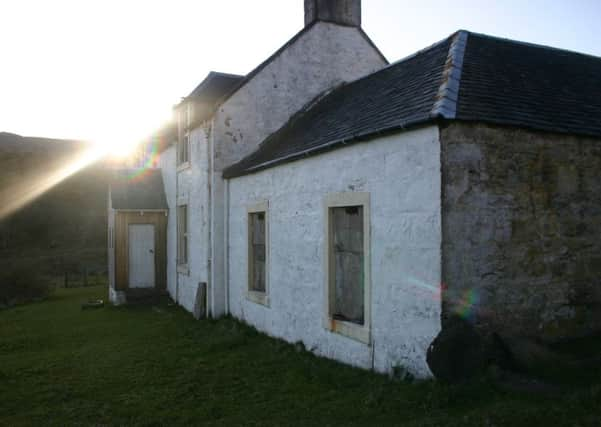George Orwell's cottage on Jura may become listed building


Scotland’s national heritage agency is considering whether Barnhill cottage should be designated a listed building – largely due to its connections with the author.
Historic Environment Scotland (HES) could also install a commemorative plaque on the property, which is at the end of a five-mile track at the north of the island.
Advertisement
Hide AdIt has been seeking views on Barnhill cottage as part of the biggest ever consultation into historic places, buildings and monuments. It has been singled out as an example of a building which is not of any architectural significance, but is regarded as being important because of its cultural connections.
Orwell stayed in the isolated farmhouse between 1946 and 1948 while he was writing his dystopian novel. But its cultural importance is not officially recognised and there is nothing to prevent the building being demolished.
HES has started recognising the former homes of leading cultural figures such as the legendary comic actor Stan Laurel, artist Joan Eardley and lighthouse engineer Robert Stevenson, but a new policy would be needed to give properties statutory protection on the basis of their cultural links.
Barnhill, which was built on the site of a 15th century settlement, is still owned by the Fletcher family who rented it out to Orwell. The property can be hired from £1,000 per week and sleeps up to eight visitors at a time. However, potential guests are warned it is only accessible via a boat or 4x4 vehicles.
The official website for Barnhill states: “In keeping with its heroic isolation, you’ll rely on a generator for electric light and charging phones (it’s not really up to powering hair-dryers and so on), there’s a small, gas-powered fridge, and the coal-fired Rayburn takes care of the hot water. The potent cast-iron stove in the sitting room helps to warm any parts the whisky fails to reach.”
Barbara Cummins, director of heritage at HES, said: “Listing is quite a historic process. It was instigated by gentlemen enthusiasts. It was about the significance of aesthetics and architecture. We are shifting our focus away from that approach.
Advertisement
Hide Ad“We need to think very carefully so we don’t impose a burden or bureaucratic procedure on an owner that is unreasonable. It is about how we recognise somewhere like Barnhill.”
A spokeswoman for HES said: “This was the first survey of its kind to ask people for their views on how Scotland’s places, buildings and monuments should be recognised. The feedback from this consultation will be used to shape future historic environment policy, and we are still very much at the information-gathering stage, engaging with a wide range of groups, including other sector organisations and academics.”